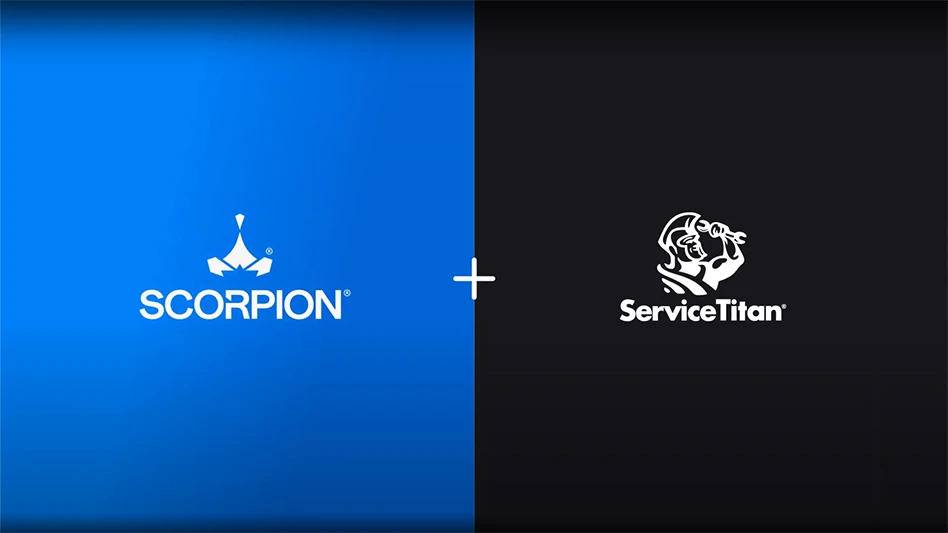You’ve probably heard all the stories. Credit cards won’t work. Electric companies won’t have power. Planes will fall from the sky. And all because of a computer problem created years ago. But how will the year 2000 affect you and your business? Is the sky really falling?
It’s safe to say the sky isn’t falling. But the reality is no one knows for sure what’s really going to happen when the calendar flips from Dec. 31, 1999, to Jan. 1, 2000. Chances are, however, that some aspect of your business will be affected.
THE PROBLEM. The “Y2K” problem (“Y” for year and “2K” for 2000) was created years ago when memory storage in computers was very expensive. According to the Microsoft web site (www. microsoft.com/technet/topics/year2k/), “by asking the developers to conserve just two bytes per record in memory line (the “19” of 1975, for example), organizations were able to realize millions of dollars in savings.”
Think about when you write the date on a check. You probably write 10/5/98. Why? It’s habit. You save two numbers in writing “98” instead of “1998.” Everyone knows what year it is. Herein lies the problem with our computers. Today, your computer understands that it is November 1998. Depending on the age of your computer, it may understand that the date is 11/98, instead of 11/1998. When it rolls around to January 2000, the computer may read that date as 1/00, since it drops the first two digits automatically.
Because of the two-digit dating system, the computer may translate “00” into 1900. This creates a multitude of problems. The computer won’t understand that the year 2000 follows the year 1999. It will see “00” as being less than “99.” For example, 2000-1999 = 1, but 00-99 = -99. So, if you have a computer that reads dates in this way, it will think bills are overdue (because the accounts it is billing for haven’t been opened yet), appointments won’t be scheduled, and statements won’t be printed. All because the computer doesn’t understand that the year 2000 follows the year 1999. So, years ago programmers solved their immediate need to save money. They had no idea that 30 years later, programmers would be using the same codes and programs to run today’s computers. But we are.
BATTLING THE BUG. So what happens now? A Stamford, Conn.-based information technology consulting company called the GartnerGroup reported to Congress in October that the total cost of Year 2000-related information technology would range from $300 billion to $600 billion worldwide. And U.S. information technology costs are expected to account for $150 billion to $225 billion of that figure.
What this means for small companies is clear. Your computers and the systems that run them must be able to understand the year 2000. But how to go about making sure you’ll make the leap into the 21st century is unclear to many small business owners.

There are two issues that need to be looked at when evaluating your computer system — the hardware, which is the actual computer itself, and the software, which are the programs on your computer that make it operate. And there are a few of signs your computer system might not make it through the date change, says Brett Harward, CEO of FrontRunner Technologies, a Phoenix-based software developer for the pest control and lawn industries. “First, if your computer is pre-1997,” Harward says. The majority of computers manufactured before 1997 are not year 2000 compliant. And, of computers made in 1997, Harward says about 40% are not year 2000 compliant either.
“If the computer is pre-1997, there are problems on the system level,” he says. “The computer won’t operate or it will operate sporadically.” Essentially, what this means, is when you turn on a computer that is not year 2000 compliant, it may not boot up, it may crash when it opens, or it may open up but may operate strangely. If your computer was manufactured in 1998, Harward says, your hardware is most likely year 2000 compliant.
A problem with the hardware is much easier to fix than a problem with the software. There are many programs that have been developed to check to see if your hardware is ready to handle the switch to 2000. These programs are available at computer and office supply stores, and are moderately priced, around $30 to $40, Harward says. These programs will check to see if your hardware is ready to handle the new year.
If there is a problem with your computer’s hardware, you have one of two choices: You can take your computer to a computer repair shop to have it upgraded so that it can understand the dates, or, you can buy a new computer. “At the minimum, people will have to have their BIOS (Basic Input/Output System) chip changed,” Harward said of upgrading an old computer.
The other option may be better — and less expensive. “Because new computers are so cheap now, actually, it may be less expensive to buy a new computer than try and have someone fix the old one,” Harward said.
The second, and more difficult, compliance problem relates to your company’s software. Most PCOs use some type of pest control-specific software to schedule routes, process billing or just to do general office duties, Harward said. Smaller companies may use other programs not specific to the pest control industry, such as Microsoft Office 97. No matter what kind of software your company uses, you need to make sure it is year 2000 compliant.
There are several situations that could arise when the year 2000 arrives regarding your software. Either both the hardware and software will be compliant; either both the hardware and software won’t be compliant; or, some combination of the two.
How do you test to see if your software program is year 2000 compliant? That is a difficult question to answer. Because so many custom software companies exist, there is no surefire way to know if your programs will work. According to Harward, there are two ways to know what will happen with your software programs when the year 2000 arrives: Either you have an ongoing relationship with your software vendor and they will let you know if your software is compliant by issuing a legally binding certificate stating that your software will work in the future, or, if the software company won’t give you such a statement or they are no longer around, you have to assume your software programs aren’t compliant.
In the case that you can’t get verification from your software vendor, the customer has one option: Get a new software program or risk losing all of your current data.
But even if on the surface your programs appear to be working correctly, you may not be able to tell right away that they’re not. If your programs aren’t compliant, then they just might stop working. The computers may crash and programs might stop. “This is the least painful way,” Harward said. “Because at least you will know what is going on.”
The other way you’ll find out if your software isn’t working is that everything may appear to be running normally, but in reality it’s not. Your computer may just assume when it rolls the dates over that it is 1900 instead of 2000 but just keep on “working” fine. The problem will be obvious when you go to run reports that are date-based. For example, in a scheduling program, if you are trying to schedule a treatment for Jan. 15, 2000, and the most recent stop at that customer’s home was Oct. 15, 1999, the computer may not let you schedule it because it sees the date 1/15/00 as being before 10/15/99, when in fact, it’s not.
WHAT TO DO. So what are pest control companies that rely on software programs for billing, scheduling and route managing supposed to do? First, Harward says, companies need to identify if they are a high-risk candidate. You are at high-risk if your computer is pre-1997, or if you can’t validate that your software is year 2000 compliant.
Next, formulate a plan. If you are at risk, then you need to take some steps to get your company compliant. This means either updating your hardware and/or software if you anticipate problems. “Getting a new (software) package that is year 2000 compliant is probably less expensive than trying to update your current program,” Harward says, since the original programmers may no longer be available. Companies should also create backup plans in case parts of their computer systems fail.
“While you are testing and fixing any year 2000 problems you may have, you should also begin preparing for the effects other people’s computers are going to have on you,” writes DMA Consulting, an Orlando, Fla.-based computer consulting firm. The company has published a booklet titled “Year 2000” to help companies deal with Y2K. “You can do this by starting to make a list of all the documents you will need to prove ownership, loan payment balances and financial statements.” This includes bank statements, stocks, utility bills, titles or deeds you may have.
Harward also suggests creating a paper trail for your company. “Have a manual system ready to go,” he says. Print out logs and copies of customer lists, he said.
Some PCOs think of themselves as pest control professionals first and businessmen second. But that kind of thinking will most likely get them into trouble if they don’t start figuring out a way to address the Y2K dilemma. Although it may be difficult, time-consuming and expensive, everyone is probably going to be affected by the Y2K problem. And we are all going to have to deal with the problem sooner, preferably sooner than later. “People who are not Y2K compliant are going to have to find a new way,” Harward said.
But even if your company isn’t ready for the year 2000 yet, there is still time. “It is important not to be frantic — companies have time,” Harward says. “But it is absolutely silly to gamble your business and think it won’t affect you.”
Sidebar: Y2K ASSISTANCE FOR SMALL BUSINESSES
The U.S. Small Business Administration was created by Congress to help America’s entrepreneurs form successful small enterprises. SBA offers the following advice to small business owners regarding the Y2K bug:
1. Determine your business’ Y2K risk with affected hardware, software or embedded data chips (a self-assessment test is available on the SBA’s Internet Y2K web site at www.sba.gov/y2k).
2. If you are vulnerable, take action now. Don’t wait. Fix your problem and test the results.
3. Develop contingency plans to deal with the effects of Y2K problems outside your control.
4. Stay informed. Accurate information may change as solutions evolve.
To keep the public informed, the SBA has instituted three procedures to obtain current Y2K information. These include a Y2K Internet site at www.sba.gov/y2k and SBA’s toll-free Answer Desk at 800/U-ASK-SBA (800/827-5722). The answer desk staff will route callers to the best sources of Y2K information. The third option is to use the agency’s newly created fax-back system. To use the system, call the toll-free number 877/RU-Y2K-OK (877/789-2565). Make a selection from the menu. Within a few minutes, you’ll receive a fax targeted to your specific Y2K needs. SBA’s Y2K fax-back can be used on touch-tone or rotary dial telephones and is available 24 hours a day.

Explore the November 1998 Issue
Check out more from this issue and find your next story to read.
Latest from Pest Control Technology
- OvoControl Now Available in Chile
- Envu Announces Savings Programs for Pest Management Professionals
- Follow the Trail
- Carpenter Ants: Understanding the Bothersome Burrowers
- Massey Services Acquires Insight Pest Solutions of San Antonio
- Target Specialty Products Expands Sales Leadership Team
- Mosquito Joe Promotes David Price to Vice President of Strategic Growth
- Abell Pest Control Recognized as One of Canada’s Best Workplaces in 2025





